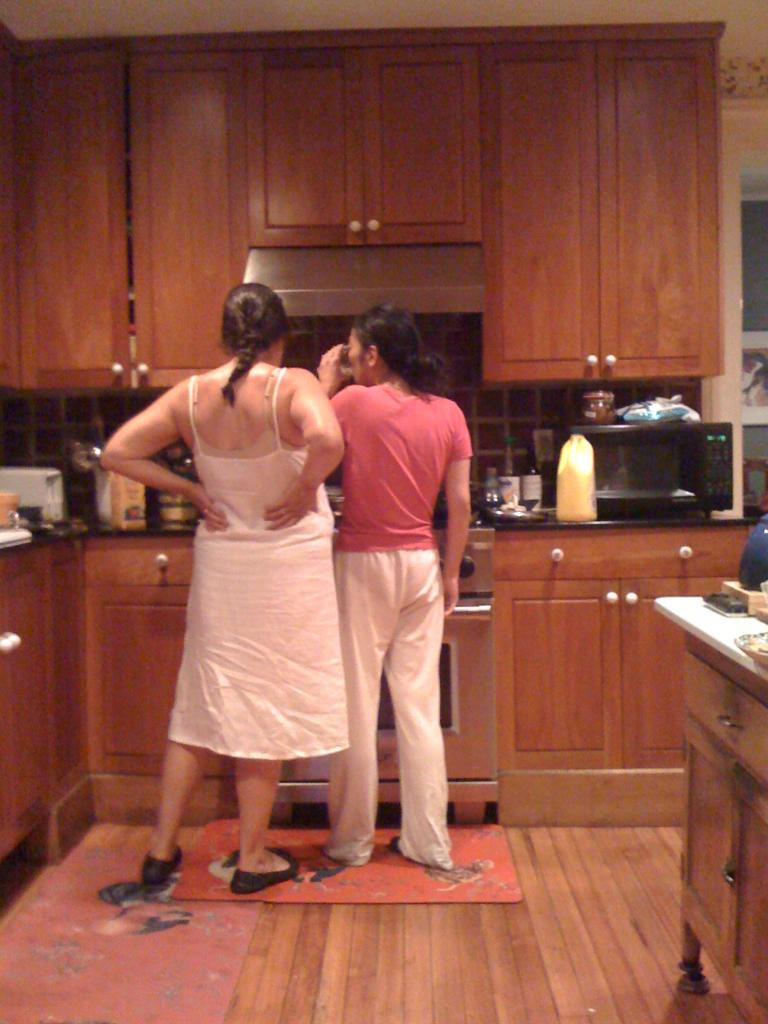Pineapples and avocados? For this salsa, trust the Cuban woman who wrote about Jews, Christians, and Muslims harmonising in Medieval Spain.

María Rosa Menocal, the Cuban-born medieval historian who died in 2012, loved men, her children, books, food, company, and song. She was not beautiful, but sexy and arrestingly plain. She had a straight dark bob, a faint mustache on her upper lip that many Italian men yearn for, and she wore long, flowing things. Her best-known book is Ornament of the World, about that remarkable period when Jews, Christians, and Muslims co-existed together in Medieval Spain. She helped cultivate a gastronomy programme at Yale, the university where she taught, which included inviting luminaries Alice Waters and Claudia Roden.
In her food shopping habits, she was almost exclusively farmers' market. She lived in New York and New Haven and shopped in Manhattan's Union Square and also the more modest establishment in New Haven's Wooster Street. Her daughter, who was then a freshman in college, once mentioned a friend baking zucchini bread and Maria Rosa remarked, honestly astonished, “Really? Where would she get zucchini this time of year?” It was February.
“Mom,” her daughter rolled her eyes, “not everyone buys seasonally. There’s such a thing as a Stop & Shop.”
María Rosa liked to dance when she cooked, idly swaying her hips. Because I had voted for Obama and she was an expatriated Cuban, we did not talk about politics. Many Cubans of her age leaned Republican. Instead we chattered about books, language, the good-natured gossip of which there was a never-ending supply, and why one should rub bacon at the bottom of a rice pot to get a perfect crust.
One evening, I came to her New Haven apartment with my mother to find Maria’s daughter cutting pineapple into tiny squares to go into a bowl with avocados that had also been diced."Guacamole,” the daughter announced. The combination looked not-at-all guacamole. While not a repellent combination, the notion of pineapple and avocado is not one to make a heart leap. It smacked of a retro 1990s trend, like when everyone was putting strawberries in their spinach salad, or sprinkling feta on blueberries.
I looked at María Rosa, dubious. She squeezed my shoulder. “Do you trust me?” she murmured. “This is Cuban guacamole. Just trust me.” In my life, I trusted María Rosa in many things. I would eat pineapple guacamole.


***
That night remains one of my most vivid dinners. “Mothers and daughters only please,” María Rosa had stated in her invitation. The exception was Esperanza, a tiny, spry, gorgeously groomed eighty-year old who was María Rosa’s honorary aunt, and who hugged you hard.
“The guy that I usually buy my chorizo from in Union Square wasn’t there,” María Rosa said, “So I had to get different ones. See what you think of these. I’m just not sure.” María was not a fussy cook. She had taken the soft, raw links, browned them and thrown them in with some black beans and coriander, perfuming the apartment with garlic and paprika. There was rice, slightly oily with the bacon grease that María Rosa swore by. There was the Cuban pineapple-avocado guacamole. Whirled with olive oil, cilantro, lime juice and salt, it was bold, sweet, astringent, and decadent, and like nothing I had tasted before.
In María Rosa's guacamole, the avocado is mellow, creamy, and self-assured, the pineapple is sweet and skeptical.
Throughout the evening, we talked and laughed. Daughters sniped against their mothers, their mothers sighed, and María Rosa and I snuck a cigarette in the garden. “Mom,” I said, digging into the rice, “why don’t Chinese people put bacon in their rice? This way is so much better.” Both my mother and María Rosa were immigrant, divorced historians who loved their children, and so there was also perhaps, in their relationship, the slightest competitive shadow. For dessert, my mother made a tarte tartin, for which she is justly famous. She cut the pastry at María Rosa’s counter, browned butter and sugar into caramel, and peeled pears at María Rosa’s stove, because she was confident that this performance would yield a masterpiece.
Combining disparate elements (people, history, food and also flowers), I have since realized, was something else that Maria Rosa had in common with my mother; in the kitchen they might pair preserved lemon with soy sauce; as professors and hostesses, they would weave adoring, but fiery and intellectually challenging webs. In Maria Rosa’s guacamole, the avocado is mellow, creamy, and self-assured, the pineapple is sweet and skeptical. These days when I make it, depending on the quality of the pineapple and avocado, I may add a drop of honey.
In my life, I have eaten many dishes made by wonderfully vivid characters, but when I replicate their dishes, their presence, for me, is not guaranteed. However, every time I dice pineapple and avocado, I inevitably hear María Rosa’s voice. It is husky and no-nonsense and she is talking to me from a height, because she was tall. She wants me to do -- not well -- but sensationally in life, to travel, to publish, to fall in and out of love. She suggests gently, perhaps, that my pineapple can be cubed smaller.
“Just trust me,” she says.
Maria Rosa's Cuban Guacamole

(I have scaled this down to serve 4. Maria Rosa would never consider buying pre-prepped pineapple and would only buy a whole one.)
Serves 4
1 large avocado, cut into small dice
250 g pineapple, cut into small dice
Handful of coriander, chopped fine
3 tbsp of olive oil
2 tsp honey (optional)
sea salt to taste
Combine into a bowl and taste for seasoning.


תגובות